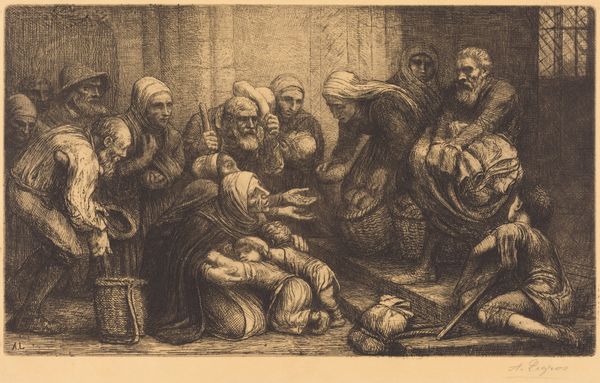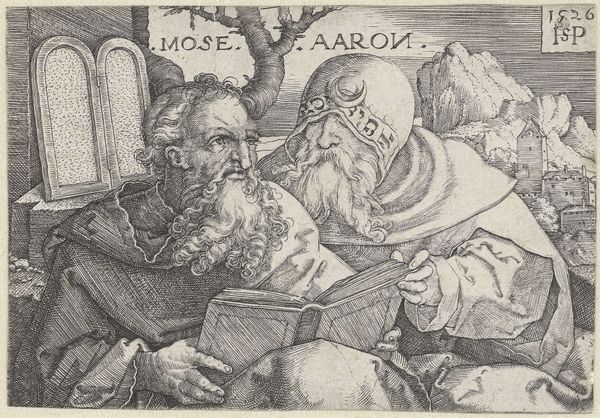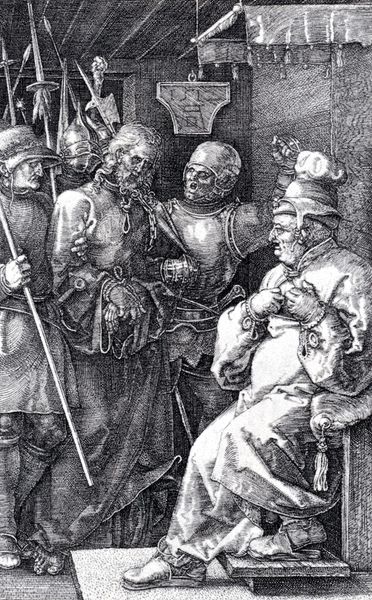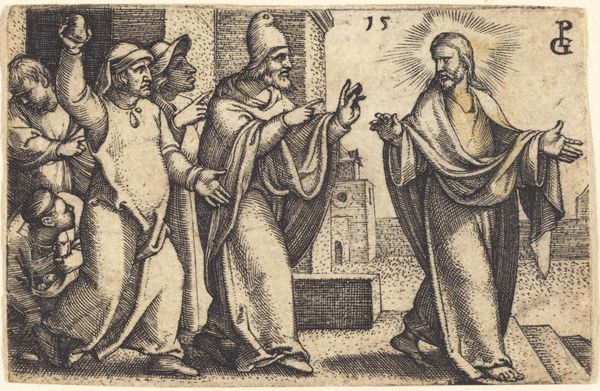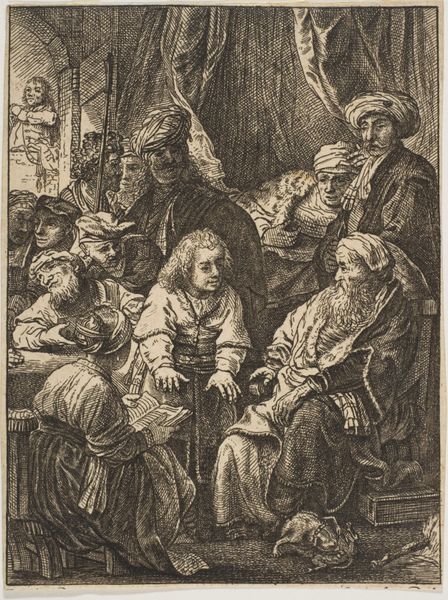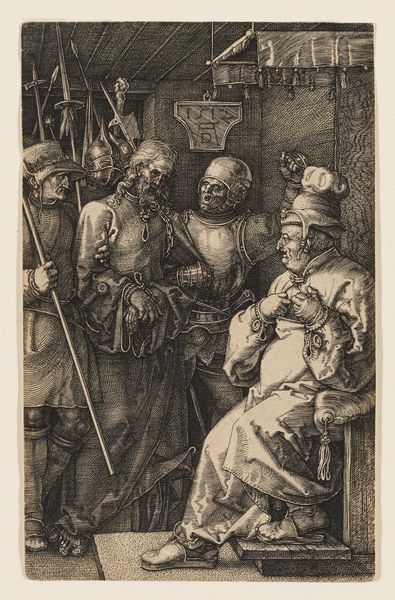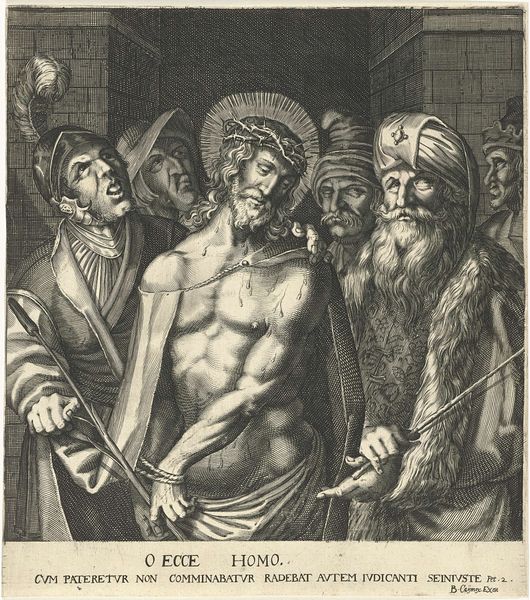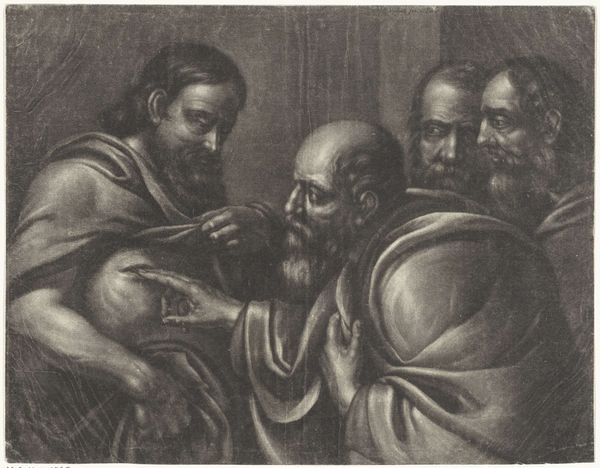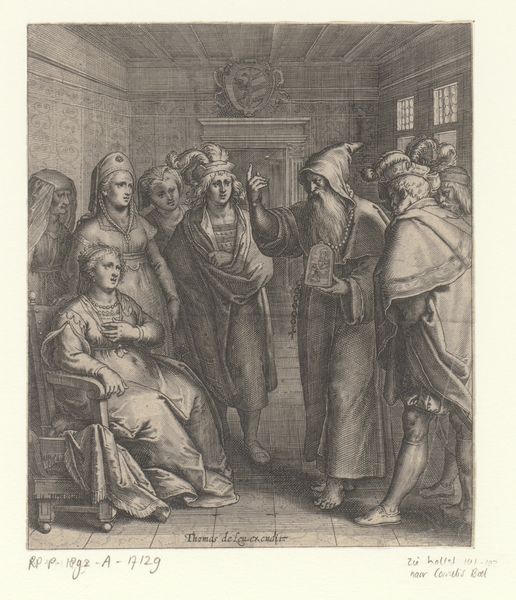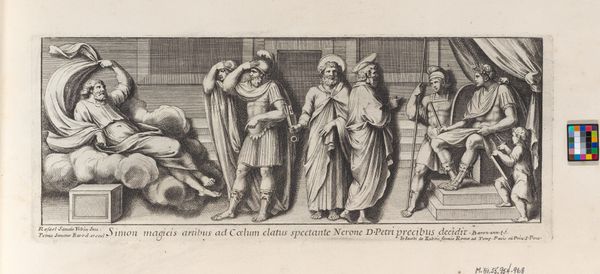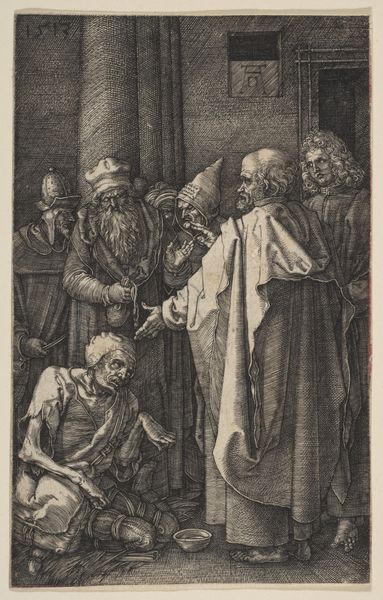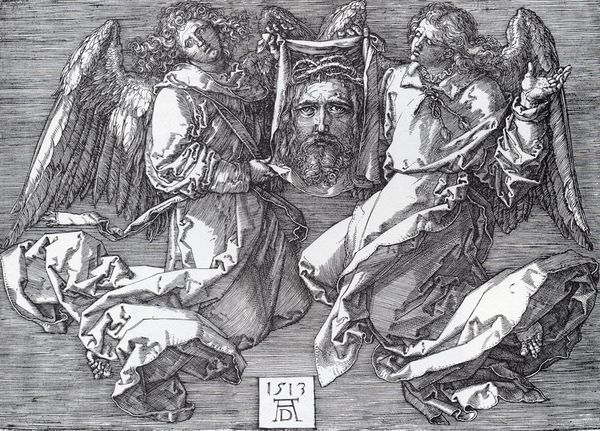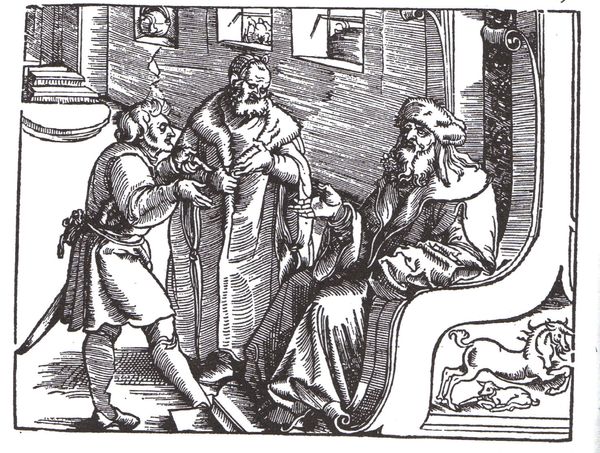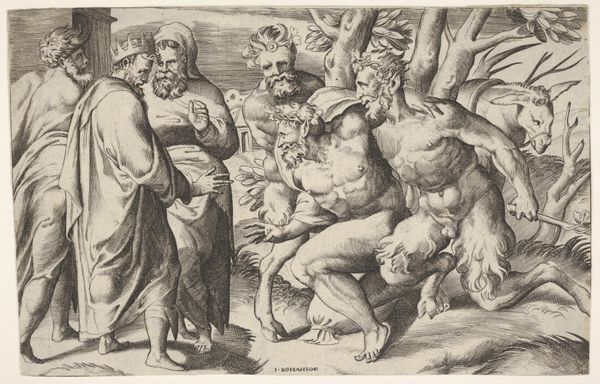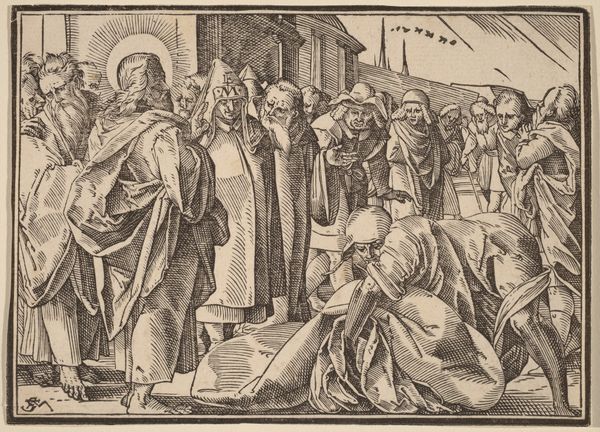
drawing, print, engraving
#
portrait
#
drawing
#
baroque
# print
#
charcoal drawing
#
pencil drawing
#
portrait drawing
#
history-painting
#
engraving
Dimensions: Sheet (Trimmed): 5 1/4 × 7 5/8 in. (13.3 × 19.3 cm)
Copyright: Public Domain
Curator: Here we have a historical print, likely from between 1615 and 1800, titled "The Tribute Money" and its themes link back to ideas around the relationship of early modern religion and civic society. What are your first impressions? Editor: Immediately, I’m struck by the density of figures and the intensity of their expressions. There's a lot of looking and a strong, dramatic, theatrical mood; but, simultaneously, the engraving technique yields these meticulous details, almost a forensic level of looking that can't resolve easily. What do we know about who created it, and why? Curator: Well, "The Tribute Money" comes from the New Testament—the question of whether it's lawful to pay taxes to Caesar—so, by naming the print thusly, it's engaging in that history of Christian thought regarding state authority. And in this case, while we don't know who made this specific engraving, we understand that images of similar subject matter served purposes of didactic religious instruction, often taking their forms from more recognized or celebrated paintings. Prints were crucial to spreading new ideologies, even new theologies. Editor: The composition definitely hints at the theatrical, but it's also fascinating how crowded these men are in the frame. The arrangement really foregrounds the anxieties around authority, especially for a piece reproduced for the consumption of the masses. There's such a palpable sense of challenge among these faces. Were prints often made in response to socioeconomic inequities and the church? Curator: Definitely. Prints in particular became central to disseminating critiques of power, as printmaking provided ways to engage social inequalities by visually depicting those realities, or those injustices. In this engraving, it may be a reach, but I also wonder whether its deployment of intense lines mirrors some of the social stresses experienced throughout the baroque period, that were of course unevenly distributed. Editor: That's really interesting. This image becomes such a potent reminder of how artistic interpretation itself is always situated within very real political landscapes. Looking at the range of textures created by these finely etched lines, it highlights how accessible yet nuanced visual messages could become. Thank you for shedding light on the work! Curator: It seems like through art, in turn, we find the seeds for action and awareness. I see this print as a great vehicle to demonstrate those conversations!
Comments
No comments
Be the first to comment and join the conversation on the ultimate creative platform.
